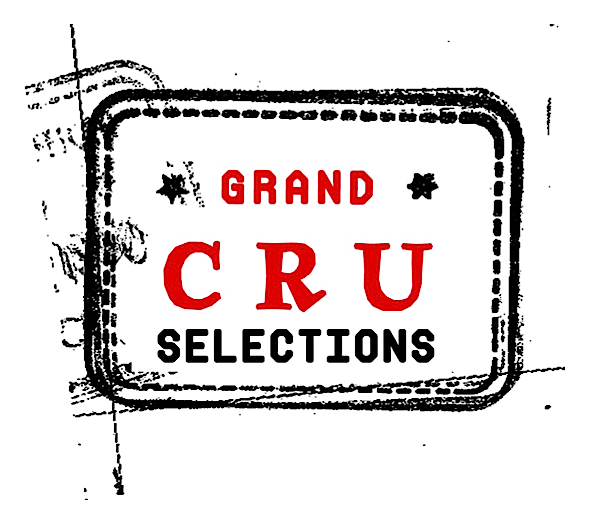Venica & Venica
Dolegna, Collio, Friuli, Italy
Giampaolo Venica
Venica & Venica is one of Friuli’s most well known and respected estates, a family-owned operation whose ambition and dedication to sustainability run even deeper than their history in the Collio. Renowned for turning out highly textural and aromatic whites, their vineyards are a kaleidoscope of the vast potential of winemaking in this area, upheld by an impeccable adherence to organic practices and respect for the environment. The family’s natural sense of hospitality carries over in everything that they do, adding a special component to the azienda.
-
The estate was founded in 1930 when Daniele Venica purchased Ronco del Cero in the Dolegna district of Collio. The winemaking adventures didn’t truly take off until 1977 when Gianni and Giorgio Venica - Daniele’s grandsons - took the reigns, immediately ensuring a promising future for the estate’s vines. The brothers’ passion was thanks to their father, who had willed the property to be an agricultural estate and always maintained a futuristic vision for the family’s activity. Georgio’s son, Giampaolo, has now stepped in and continues the family legacy with an incomparable verve and passion. A globetrotting spokesperson not only for Venica but for the entire region of Friuli, Giampaolo’s smile and passion for wine is known around the world.
-
Venica holds 37 hectares of land in Collio, the renowned portion of Friuli that extends over 1300 hectares on sun-kissed hills influenced by the nearby Adriatic Sea. The terrain is made up of stratified marls and sandstone of Eocene origin which formed an ancient seabed. The vineyard soils are extremely rich in minerals, particularly calcium carbonate, and are often referred to by the local name “Ponca.”
-
Venica’s seven principal vineyards are dominated by white varietals: Sauvignon, Malvasia, Ribolla Gialla, Chardonnay, Traminer, Friulano, Pinot Grigio, and Verduzzo (an ancient local varietal). Each vineyard has its own particular microclimate, and is treated in the most natural way with utmost respect for nature and the use of only natural products in the vineyard. Attentive, scientific observation and planning is practiced in the vineyard from the plant to its deepest roots to the soils in which it lives. Since 2011 the company has been aligned with VIVA Sustainable Wine, a national pilot project launched by the Ministry of the Environment to assess the impact of viticulture on the environment. VIVA measures the sustainability performance of the vine-to-wine supply chain and has proven valuable to the Venica family.
-
Grapes are all destemmed in the Venica cellars, and all varietals except Pinot Grigio are cold macerated for 12-24 hours. Carbon dioxide produced during the fermentation process is captured and recycled in maceration tanks to avoid oxygen exposure and oxidation of the juice. Fermentation is carried out mainly in stainless steel tanks while certain wines partially ferment in large oak casks (20-27 hL). No malolactic fermentation is carried out. Wines age about 7 months before bottling.
Wines
Pinot Grigio “Jesera”
Most of this Pinot Grigio comes from a single, two-hectare vineyard named "Jesera" but fruit is also sourced from four neighboring vineyards. "Jesera" translates to "little lake" in Slovenian and the name of the wine references that this vineyard is at the base of a valley next to a stream. The Pinot Grigio's color comes from a prolonged maceration, up to 24 hours in some vintages. Around 10% of the wine is aged in large barrels (20-27 hectoliter) while the rest stays in stainless steel.
Sauvignon “Ronco del Cero”
Ronco del Cerò is the name of hill that Daniele Venica bought in 1929 and became his first site for Sauvignon Blanc. This wine is fermented on its lees entirely in stainless steel.
Sauvignon “Ronco delle Mele”
The Ronco delle Mele or "Hill of the Apples" is a single vineyard site planted to Sauvignon Blanc, named after the apple trees that dot the hill which were originally planted to prevent erosion. The presence of these trees contributes to the richness of the soils, and lends to the overall complexity in the finished wine. The vineyard faces northwest. 20% of the wine is aged in large barrels (20-27 hectoliter) while the rest is aged in stainless steel. Throughout the years, this is one of Venica’s most accomplished wines.
Malvasia “Pètris”
Drawing its name from the Friulian word for “pietra” or stone, Petris is also the name of this area in local dialect. The zone is characterized by its particularly rocky soils. It is 100% Malvasia Istriana - a varietal that dates back to the XIII century in Friuli-Venezia Giulia - aged mostly (70%) in botti of 20-27 hectoliter with the remaining 30% vinified in stainless steel.
Friulano "Ronco delle Cime"
Ronco delle Cime translates to the "Hill of Peaks." It is Venica’s highest vineyard at 200 m above sea level, with a northwest orientation. Together with Ronco delle Mele they form the two crus of Venica & Venica. The vineyard was planted by Gianni and Giorgio Venica in 1999, who willed it to make a single vineyard expression with a vocation to the cultivation of Tocai friulano. The wine is aged on its lees for 6 months, partially in stainless and partially in 20-27 hectoliter botti.

